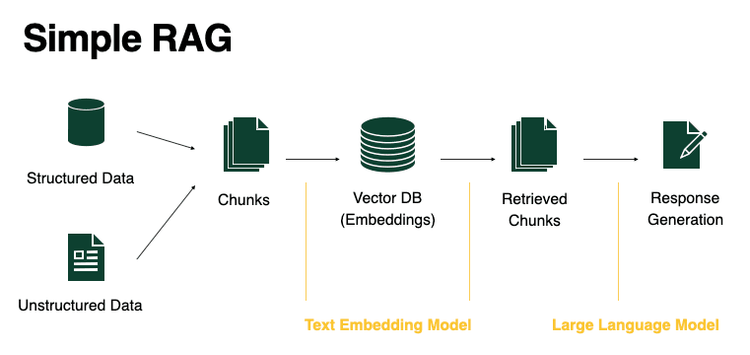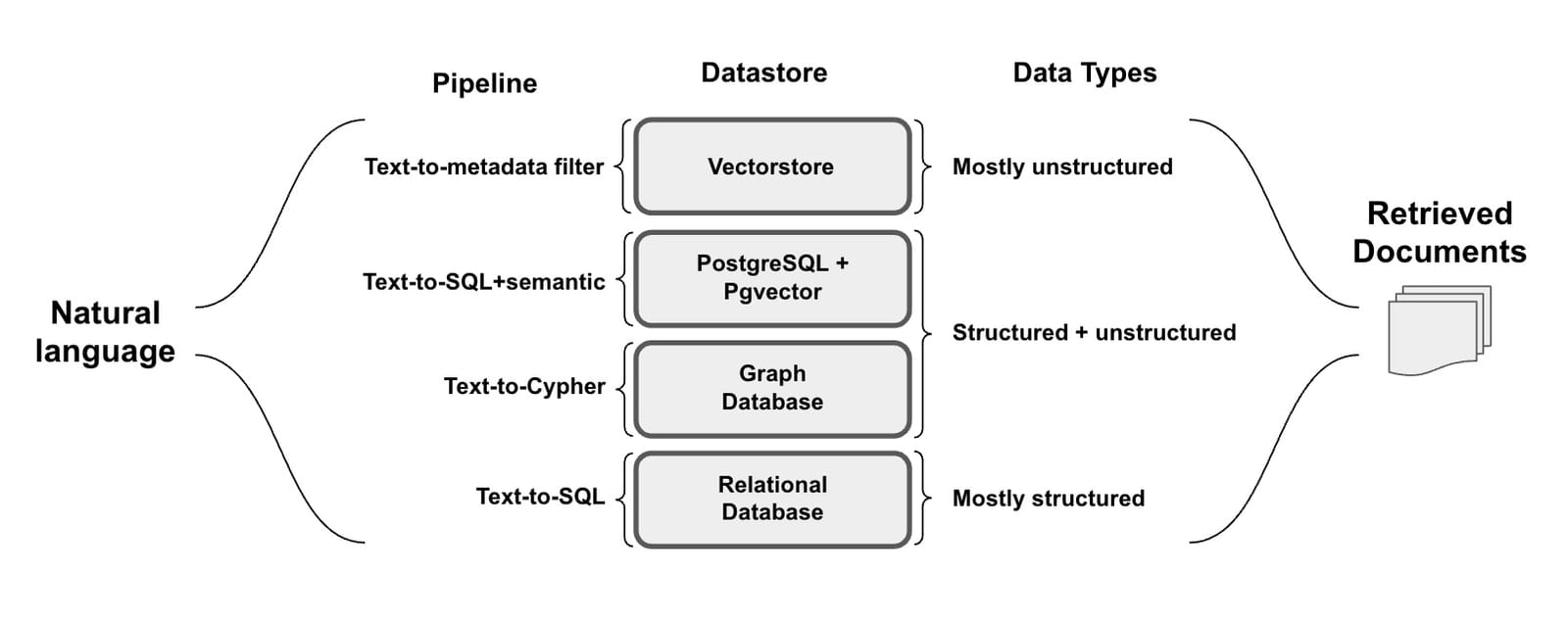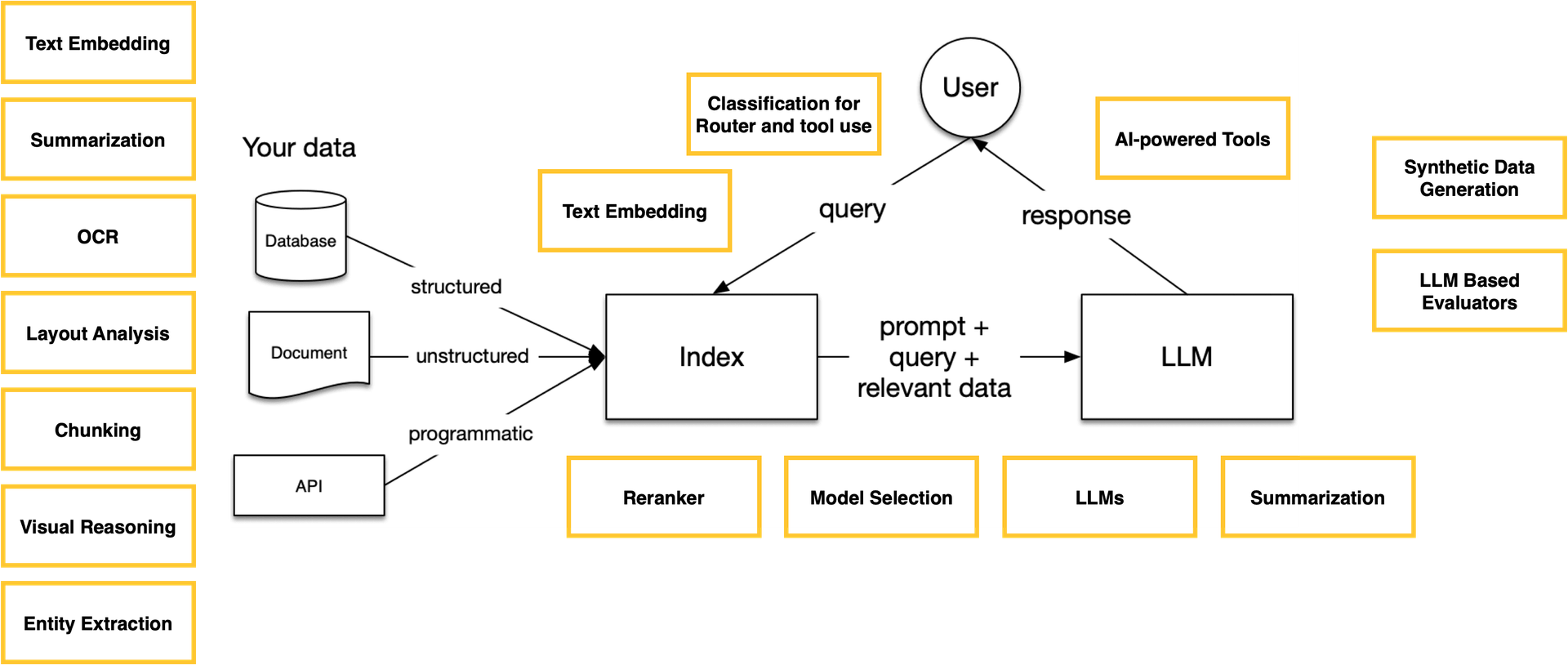29. Retrieval-Augmented Generation
Learning objectives
- Understand the stages and challenges of RAG.
RAG
From Deconstructing RAG and Building RAG with Open-Source and Custom AI Models
Retrieval-Augmented Generation
RAG is an application pattern for LLMS.
It uses information retrieval systems to give LLMs extra context.
Allows the LLM to answer user queries not covered in its training data

RAG
Stages:
Chunking: Turn your dataset into text documents and break it down into small pieces.
Embed documents: Turn each chunk into vectors representing their semantic meaning.
VectorDB: Store embeddings in a vector database.
Retrieval: Upon receiving a user query, retrieve chunks relevant to the user’s request.
Response Generation: Add chunks to the context and use the LLM.
Challenges in retrieval
- Recall: not all relevant chunks are retrieve.
- Precision: not all chunks retrieved are relevant
- Data: complex documents, semi-structured and unstructured data
Query transformations
How can we make retrieval robust to variability in user input?
Approaches:
- Query expansion: decomposes the input into sub-questions.
- Query re-writing: re-write user questions to improve retrieval.
- Query compression: A chat conversation is compress into a final question for retrieval.
Query construction
Where does the data live? what syntax is needed to query the data?

Query construction
The retrieval process
Indexing: how do I desing the index in the vector database?
Chunk size: it controls how much information we load into the context window.
Document embedding strategy
Post-processing: how to combine the documents that I have retrieved?
Challenges in response
In response synthesis.
- Safeguarding.
- Tool use: tools used to assit the response generation.
In response evaluation.
- Synthetic dataset for evaluation
- LLMs as evaluators
In production RAG systems are a group of AI models, each playing its part in the workflow of data processing and response generation.

RAG systems